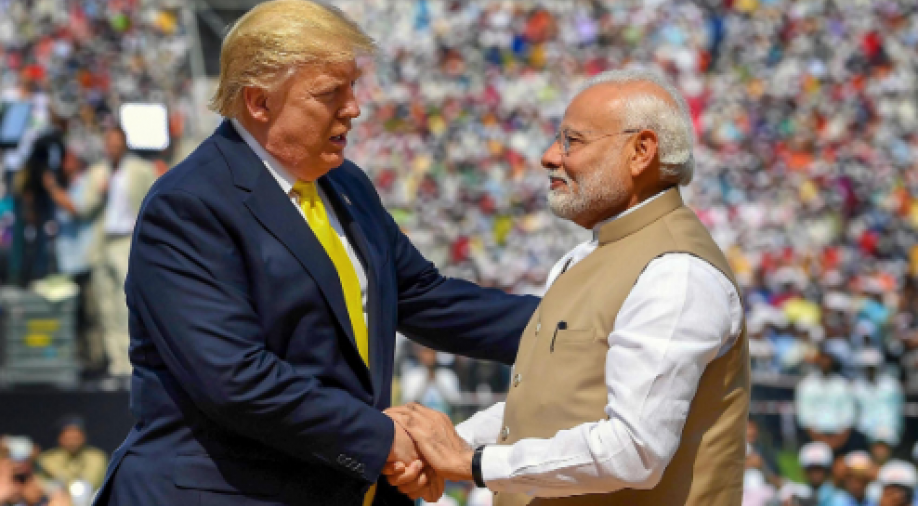US President, Donald Trump’s India visit seems to have opened the doors for greater cooperation in a range of new sectors. One of such developments that seems to have brought the two countries closer is the discussion on the Blue Dot Network.
The Blue Dot Network is “a multi-stakeholder initiative to bring together governments, the private sector and civil society to promote high-quality, trusted standards for global infrastructure development.” It came into being on November 4, 2019, at the Indo-Pacific Business Forum in Bangkok, Thailand.
The BDN is expected to serve as a globally recognised certification system for infrastructure investments. It will create a certification system for roads, ports and bridges with special emphasis on the Indo-Pacific region.
With BDN, there is an attempt to shift focus from quantity in investments to the quality of investments. It would lay greater stress upon issues like environmental costs, labour standards and most importantly debt involved.
Unlike China’s BRI, the Blue Dot Network does not offer investments and loans for infrastructure projects. It will be exclusively functioning as a body that will let people know whether a project is sustainable and not exploitative.
As a part of the BDN initiative, infrastructure project proposals will be analysed and approved by the Network depending on whether such proposals conform to international standards. Projects that are in conformity with such standards will get a “Blue Dot”.
In this sense, it can be seen as a direct counter to the Chinese Belt and Road Initiative (BRI).
China’s BRI has been an exploitative debt trap, and the Blue Dot Network can persuade countries not to fall for it.
In the subcontinent and the broader region surrounding it, the BRI has been a matter of grave concern. China’s flagship trans-national infrastructure project could create a huge debt crisis for the underdeveloped countries which will form a part of the BRI initiative. The cost of the massive project is estimated to be $1 trillion. While China claims that the initiative is a big opportunity for the regional players to revitalize their economies, the fact remains that China does not give grants to those joining the BRI rather it extends loans at commercial rates.
Take the case of Laos, for example, where China is funding a high-speed rail project that costs half the country’s GDP. BRI, therefore, reinvents the horrors of the Hambantota port in Sri Lanka.
With the Blue Dot Network that already has the support of Australia and Japan, the Trump administration is not trying to directly compete with the Chinese as far as infrastructure development is concerned.
The United States will not throw loans to create an alternative for Chinese investments, it is merely trying to establish a working platform to determine the quality of investments in physical infrastructure. And this is exactly where China stands to lose.
Beijing looks at a prolific space for debt trapping in the developing or least developed economies in the Asia-Pacific region. This is why its BRI investments have already reached around a mind-boggling $1 trillion, but the BDN can draw all those economies away from China.
China’s BRI has come under direct criticism from the Trump regime. Even Vice President, Mike Pence had directly warned the Asian economies against borrowing from Beijing at the Asian Pacific Economic Cooperation Summit (APEC) in 2018.
He had said, “Projects they support are often unsustainable and of poor quality. And too often, they come with strings attached and lead to staggering debt.” With BDN, Trump administration’s criticism of the BRI is translating into the official US policy.
Now, according to a Joint Statement released by the White House after President Trump’s visit to India and the dialogue between two leaders, “President Trump and the Prime Minister Modi expressed interest in the concept of the Blue Dot Network.”
In fact, President Trump strongly pushed India to join the existing three countries as far as the Blue Dot Network is concerned. He referred to “the quad”, that is, the Quadrilateral Security Dialogue- an informal strategic dialogue between the United States, Japan, Australia and India, along with the mention of the Blue Dot Network.
The US also looks at an opportunity to revive the quad by persuading New Delhi to join the BDN, apart from countering the Dragon’s BRI.
As far as New Delhi is concerned, tackling China’s regional hegemony through BRI must be at the top of its agenda. BRI challenges India’s influence in the region with projects like trans-Himalayan rail line and other infrastructure projects that Beijing is going to fund in the Himalayan country of Nepal, something that creates a debt crisis in Kathmandu. Any watering down in Nepal’s sovereignty due to an acute debt crisis would be directly antagonist to India’s interests in the region.
The BRI also goes through Gilgit and Baltistan in Pakistan occupied Kashmir (PoK) and therefore India would see BRI as a matter of grave concern insofar it directly militates against India’s geopolitical goals and legitimate territorial claims. Pakistan’s debt crisis and Chinese investments in PoK would mean Beijing acquiring illegitimate influence and interests in the region.
As such BDN gives a glimmer of hope to both India and the United States as far as effectively countering the BRI is concerned. Many countries have voiced concerns against China’s “debt trap” diplomacy- an integral part of which is the BRI. Therefore, BDN could resonate with countries across the world. PM Modi and President Trump might have well-secured India’s support to the BDN on his the latter’s recently concluded India visit.
